Academies were first established by the Labour government led by Tony Blair, way back in 2000. Since then, successive governments have enthusiastically encouraged academisation, and Labour are now inheriting a very different landscape to that when they were last in power.
So this seems like an opportune moment to take stock of the current state of play for academisation and multi-academy trusts. We’ll take a look at how things lay now as the new government comes into place, and attempt a bit of speculation over what the future might look like.
Data
We’ll be using publicly available data from Get Information about Schools from 2019-24. We will exclude any schools that were recorded as being closed in January of the relevant year, as well as any MATs that did not have any open schools.
Current state of play
According to government figures, there were just 203 academies open in 2010, when a Labour government was last in power.[1] The latest data shows that there are now over 10,000, amounting to 50% of all open schools.
And the vast majority of these academies are part of a multi-academy trust: 89%, at the latest count, with the remaining 11% operating as single-academy trusts (SATs).
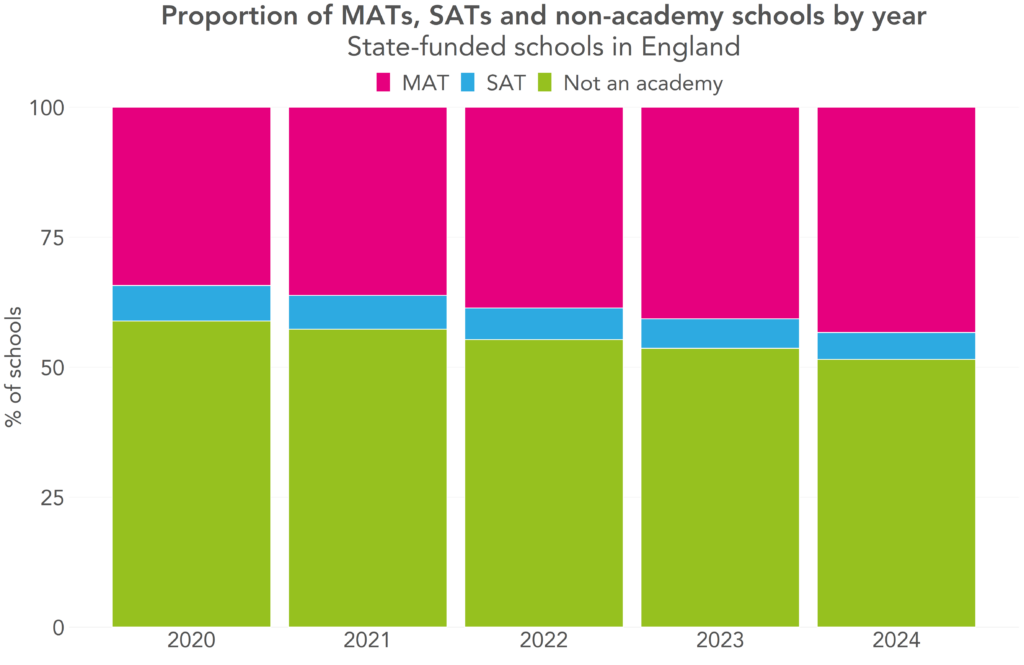
While the proportion of schools that are part of a MAT has been steadily increasing over the last few years, the proportion that are part of a SAT has been falling, down from 17% in 2020 to 11% this year.
There are some regional differences in both academisation and the size of MATs.
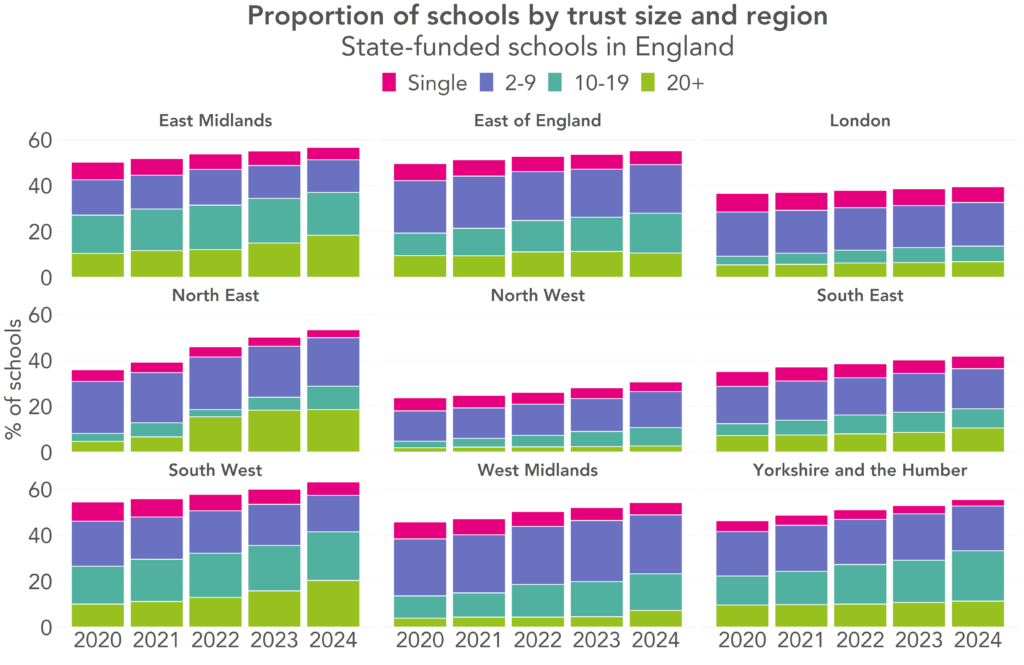
Just 31% of schools in the North West are academies, compared to 63% of schools in the South West. The South West is also the region in which the highest proportion of schools that are part of a large MAT of 20 or more schools: just over a fifth of schools. In the North West, this figure is just 3%.
And it’s also worth noting that secondary schools are currently far more likely to be part of a MAT than primaries or other types of institution, including special schools and alternative provision.

64% of secondary schools are currently part of a MAT, and a further 17% are operating as a SAT. But just 40% of primaries and 38% of other schools are part of a MAT.
We wrote in more detail on the composition of MATs a few months ago, but suffice it to say that the majority are a mixture of primaries, secondaries and / or non-mainstream schools. But a substantial majority, roughly a third, are primary-only.
And finally, to wrap up this look at the current state of play for MATs, let’s see how the number and size of MATs has changed over the last five years.

There are currently fewer MATs than there were in 2020, but there’s been a marked increase in the number of larger MATs over the last few years, although smaller MATs of fewer than ten schools still make up 75% of all MATs.
What next for MATs?
We’ve seen that more and more schools have been joining MATs over the last few years, including those that are newly academised and those that previously operated as SATs. And that there’s been a trend towards fewer, larger MATs.
Can we expect to these those trends continue? Probably. We’ve had no indication that Labour have plans to change them.
So we thought we’d take a look at how much longer it’ll be until all schools are academised if things continue as they are. The chart below shows the actual proportions of schools that were in MATs, SATs or non-academised from 2015-24, and projected proportions from 2025-45.
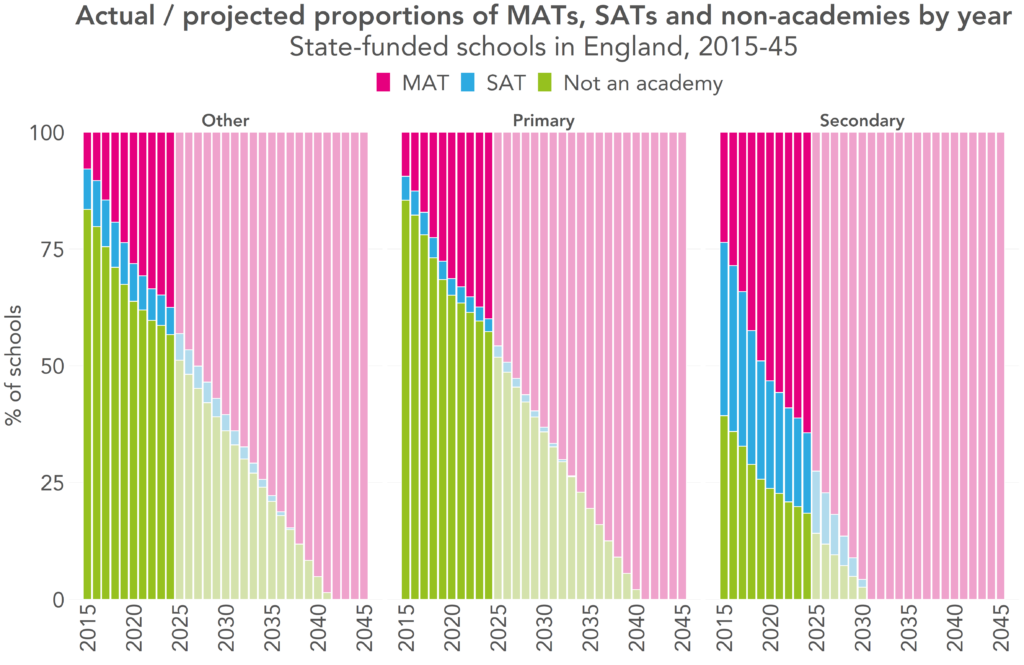
If the rates at which schools join MATs follows a similar pattern in future to that which it has over the last ten years, we can expect all schools to be part of a MAT by 2041. We can also expect SATs to be phased out by 2038.[2]
But that’s a big if – the chart is just a bit of fun, really.[3] There are all sorts of things that could happen to change the rate of academisation, including future policy changes.
It may speed up, for example if it is made compulsory for schools to join a MAT, or perhaps just as it becomes the norm. Or it may slow down, perhaps if the remaining schools prove to be particularly reluctant to join MATs. Difficulties may arise when MATs turn to recruiting schools in the regions that currently have relatively few academies, or look to incorporate non-mainstream schools.
Summing up
MATs and academies have come a long way since the last time we had a Labour government. And we’ve no reason to think that changes won’t keep coming.
Unless the new government have some surprises up their sleeve, we would probably expect the trends of the last few years to continue. That is, we’re expecting more academies, fewer but bigger MATs, and the eventual demise of SATs.
[1]: Figures taken from Academies Annual Report – 2010/11, accessed July 2024
[2]: We estimated the rate of change by fitting regression models relating the proportion of primary, secondary and other schools that were part of a MAT to the year.
[3]: Never let it be said that the Datalab team don’t know how to have a good time.
Want to stay up-to-date with the latest research from FFT Education Datalab? Sign up to Datalab’s mailing list to get notifications about new blogposts, or to receive the team’s half-termly newsletter.



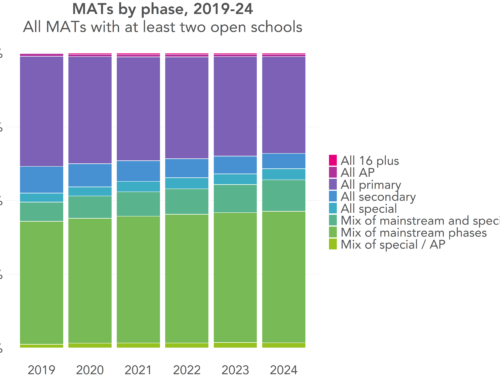
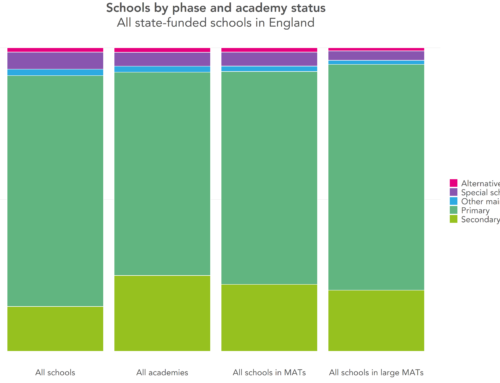
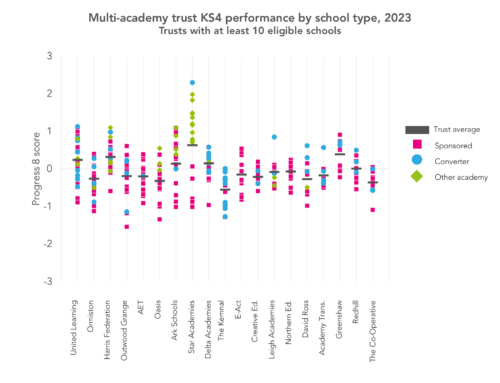
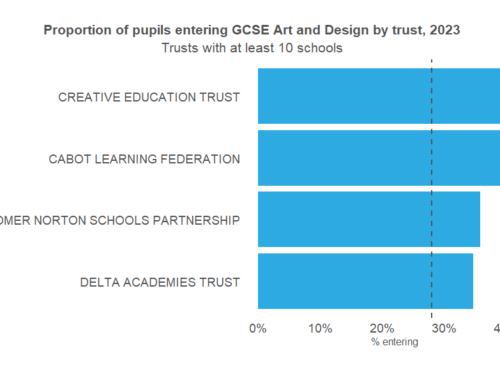
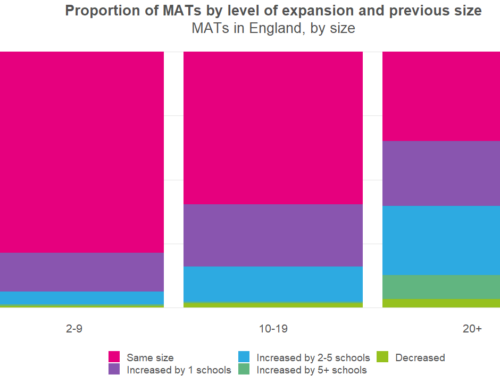
I’d like to see information on the benefits of MATs, particularly for primary schools. After a number of years working in school governance I still haven’t seen any tangible benefits over and above what was provided by a competent local authority’s support and shared services, and good learning alliances. In fact, in the schools I work with, MAT finances and therefore resourcing seems even more pressured than in the maintained schools, especially if the maintained schools are two or three form entry schools. Having the autonomy to adequate resource for increasing numbers of high needs pupils in primary schools seems to be giving these pupils a better start for high school. Admittedly, this is all anecdotal and my experience is obviously not statistically significant or representative of the country as a whole – I’d be interested to see a national picture.
Hi Natasha, the chart with MATs/SATs/LA Maintained schools is super helpful. Would it be possible to have the backing data for that?
Hi Ari, sure, I’ve put the underlying data for all the charts into a spreadsheet. Hopefully this download link will work!